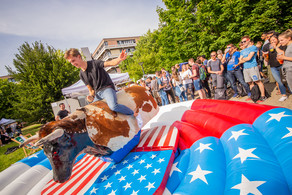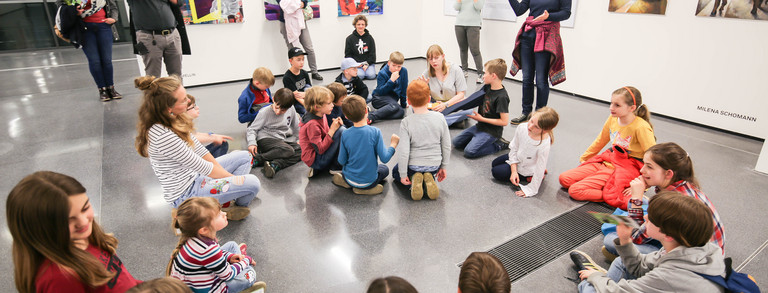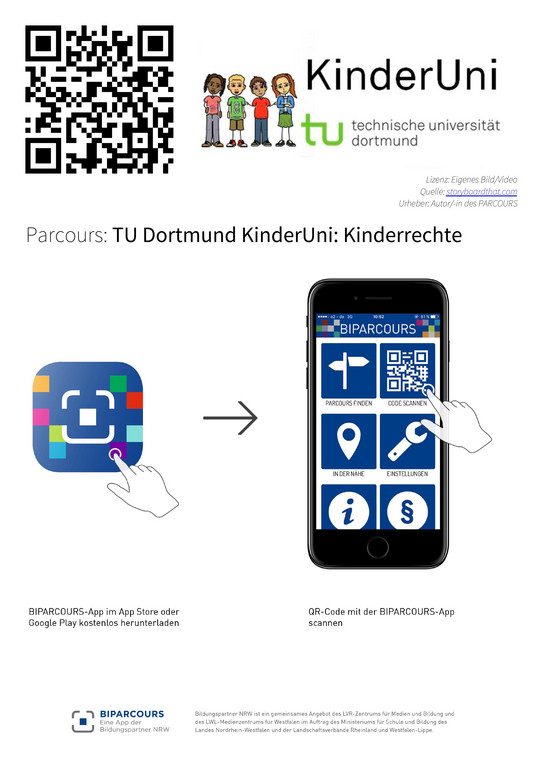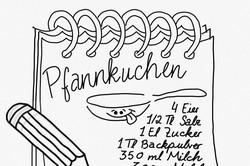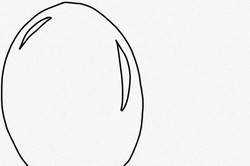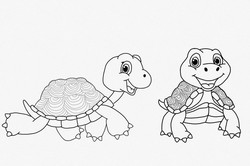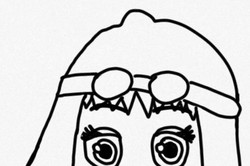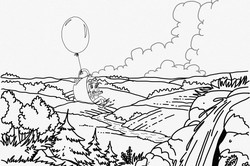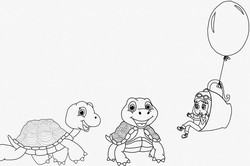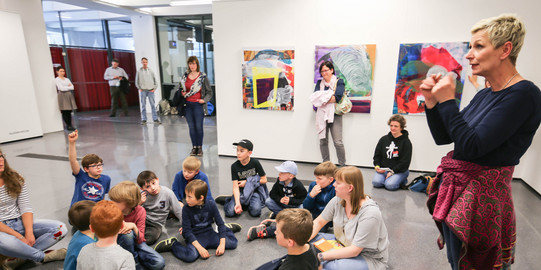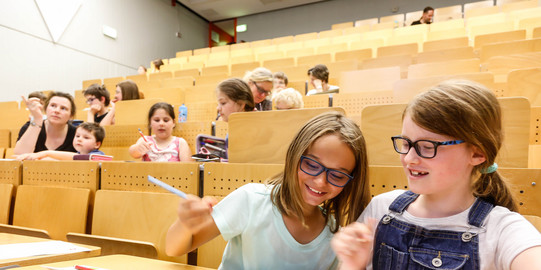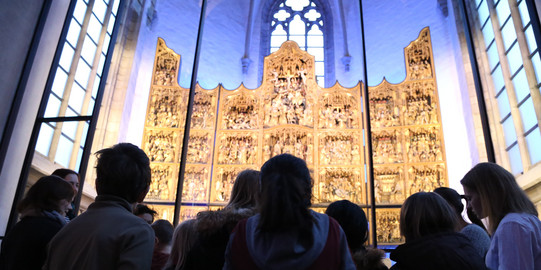Digital Children's University
Children’s University (KinderUni) is a series of events organized by TU Dortmund University aimed at children between the ages of eight and twelve. In events designed especially for children, the professors get down to the nitty-gritty, offering fun lessons on exciting topics from science and research.
Unfortunately, students are still not allowed on campus this semester – no matter their age. Instead, they’re learning and working from home and attending all classes, lectures, talks, etc. online.
Below you can find the digital Children's University content from Winter Semester 20/21.
Enjoy!
1. Do Children Have Rights?
Joschua, Emily and Dimitri are mad! Because Joschua’s mom just read the messages on his cell phone. Emily’s teacher wouldn’t let her to use the bathroom during class. And Dimitri’s dad has once again decided that Dimitri has to work in the kiosk on Saturday instead of going to soccer practice. Are adults allowed to do that? These three friends urgently need a lawyer! After all, children have rights too, don’t they?
In keeping with the principles of World Children’s Day on 20 November, we are going to look for clues: What rights do children actually have? Where are children’s rights being violated? And how can we ensure that children’s rights are taken seriously? Get trained as a children’s rights attorney and help other children enforce their rights.
To do this, download the BIPARCOURS app onto a cell phone with your parents.
Use the app to scan the QR code that we upload here on 20 November. Then you can get started right away! We hope you enjoy!
2. Pinipa’s Adventure. A Heavenly Pancake Hunt Through Europe
To celebrate German National Reading Day 2020 on the topic of “Europe and the World”, we are looking for the very best pancakes and asking why they taste so different everywhere?
Greta is on vacation with her parents. When Greta orders a pancake and gets a frittata with zucchini and peppers, she sends her best (and secret) friend Pinipa to find the tastiest pancakes. Pinipa experiences all kinds of fun and exciting adventures on her pancake hunt through Europe. And while she’s at it, this curious heroine also happens to discover our continent in her flying cup.
If you joined Pinipa on her pancake hunt, you’re invited to give this exciting pancake quiz (German only) a try.
Below the video, you’ll find some pictures from Pinipa’s journey to color in, which Prof. Marci-Boehncke’s team kindly prepared!
Info about Reading Day 2020: www.vorlesetag.de (German only)
Please confirm video activation.
After activation, cookies will be set and data is sent to YouTube (Google).
To the Google Privacy Policy
3. The Language of Animals. Language and Communication in Animals and Humans.
As humans, we aren’t the only ones who can communicate and talk to one another – animals also have their own languages, which are often more complex and multi-layered than we previously believed. Dogs, parrots, monkeys and the like communicate not only with each other, but often with us humans too, and can understand the way we communicate very well.
Please confirm video activation.
After activation, cookies will be set and data is sent to YouTube (Google).
To the Google Privacy Policy
4. Temperature, Warming and Heating in Winter
In winter, we want the house to be warm, so we turn on the heating. But how do we get a comfortable temperature and where does this thermal energy come from? What does this have to do with our carbon footprint? Heat pumps help us generate as little CO2 as possible. This lecture explains where we can find heat pumps in the house.
Please confirm video activation.
After activation, cookies will be set and data is sent to YouTube (Google).
To the Google Privacy Policy
5. What Does the University Library Look Like from the Inside and What Can You Discover There?
Lots and lots of books! The University Library is centrally located, right by the S-Bahn on campus. We’ll show you how to find books in the jungle that is the University Library, and how to take them home, even in times of the pandemic. For students, the library is an important home away from home on the university campus because it is a place where they can study in peace and meet other people. We will show you this virtually and give you some insight into how to use our digital media.
Please confirm video activation.
After activation, cookies will be set and data is sent to YouTube (Google).
To the Google Privacy Policy
6. The Dortmunder U Then and Now
Sometimes old buildings are no longer used for what they were built for. But if you don’t want to tear them down, then you need a new idea for what happens next with them. What needs to be rebuilt and renovated? Who is moving in? What can be done there later? Ten years ago, a lot was rebuilt on and inside the Dortmunder U Center for Arts and Creativity. On a tour of the building, we look for traces of the old industrial building and discover what can be seen inside and right at the top of it today.
Please confirm video activation.
After activation, cookies will be set and data is sent to YouTube (Google).
To the Google Privacy Policy
More Children's University
Here you can go back to the home page or check out the digital Children's University content of the past semesters.
Contact
Please use this e-mail address: kinderuni@tu-dortmund.de

